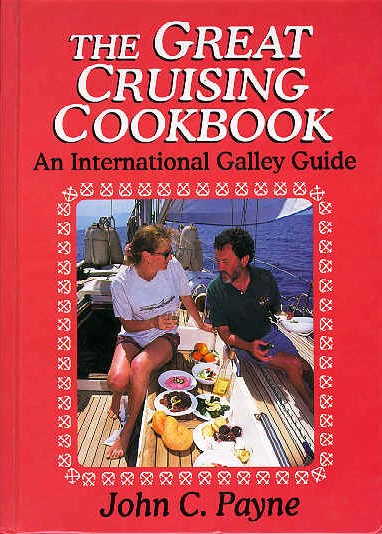South Pacific Islands Samoa
South Pacific Islands Samoa was first settled about 3,500 years ago by Austronesian-speaking people and they have found Lapita pottery during archaeological digs. Samoa has evolved into a hub for Polynesian migration, and the cultural and genealogical ties to Tonga and Fiji are very strong. Samoa is often referred to as the "Cradle of Polynesia" due to its rich cultural heritage and historical significance. It consists of two main islands, Upolu and Savai'i, along with several smaller islands. The capital city, Apia, is located on Upolu. While visiting pay homage at Robert Louis Stevenson’s, author of the book Treasure Island, resting place and museum.
The European explorers arrived in the 18th century, with French navigator Louis-Antoine de Bougainville naming the islands the "Navigator Islands" in 1768. Christian missionaries, from the London Missionary Society, started to arrive in the 19th century, and this has significantly influenced Samoan culture and religion. Samoa has in the past be subject to colonial rivalries between Germany, the United States, and Britain in the late 19th century. The islands were partitioned in 1899. Samoa was administered by Germany and then later New Zealand, and American Samoa became a U.S. territory. Samoa gained independence from New Zealand in 1962.
South Pacific Islands Samoa Agriculture
Agriculture plays a vital role in Samoa's economy and culture, with the majority of households engaged in farming. Here are some key points about agriculture and produce in Samoa:
- Main Crops: Samoa's agricultural sector focuses on crops like taro, bananas, coconuts, cocoa, and breadfruit. These are staples in the local diet and also contribute to exports.
- Livestock: Pigs and chickens are commonly raised, often for subsistence farming and cultural ceremonies.
- Fisheries: The surrounding waters provide a rich source of fish, which is an essential part of the Samoan diet and economy.
South Pacific Islands Samoa Supermarkets
The Samoan national dish is palusami. Most food is imported from Australia, New Zealand and China. Samoa offers a variety of supermarkets and markets catering to locals and visitors alike. Here are some notable options. The most common grocery store in Samoa is the small locally or Chinese-run convenience stores.
- Frankie Supermarket: A popular chain with several locations across Samoa, including Apia and Savai'I and provides the only “large” supermarket on Savai’i. Frankie also offers online shopping.. They offer a wide range of groceries, household items, and even online shopping.
- Chan Mow Supermarket: Located in Saleufi, Apia, this supermarket provides groceries and department store items.
- Lynns Supermarket & Bakery: Salenasa Road, Apia
- Farmer Joe’s Supermarkets: Locally owned supermarket franchise in Samoa, and is another option for multiple choices for grocery shopping. Their stores are located in the most places in Upolu, particularly in Apia and along the north coast
- Myna’s Supa-mart & Bakery: Cross Island Road, Vaoala (7 am to 7 pm Monday to Saturday and 3-7 pm Sunday)
- Sula’s Supermarket & Bakery: Main East Coast Road, Moataa (9 am to 9 pm Monday to Saturday)
- Apia Supermarket: Convent Street, Mulivai (7 am to 5:30 pm Monday to Saturday)
- Lucky Foodtown: Vaea Street, Saleufi (7 am to 5:30 pm Monday to Friday and 7 am to 2:30 pm Saturday)
South Pacific Islands Samoa Markets
The Fugelei Market (Maketi Fou) in Apia has a big array of local produce, most everything you need for provisioning. Open Monday to Sunday, daylight hours
The Vaitele Market. This is a small undercover market in the industrial zone of Apia, fresh local produce as well as baked goods. The market is open from 6 am to 7 pm Monday to Saturday and is located on Vaitele Street (between Burger Bills and Frankie), Apia.
The Salelologa Market is in Savai. It is open from 7 am (all day) Monday to Saturday and is located in the commercial centre to the south of Salelolga, just turn left off the ferry then right past Lusia’s Lagoon Chalets.
Road Stalls. There are many roadside stalls for fresh fruit and vegetables including coconuts, pineapple, taro and on some mornings fresh fish and the prices are the best as is the quality.
Samoa Seafood Market. Get to the Apia Fish Market 05:30 to 11:00 daily and 5 am to 9 am Sunday.so get there early for best choice. Very good value fish, lobster, octopus, tuna, crab and much more.
Taufusi Drive-Thru Market. Samoa’s only drive-thru market, order at vendor stalls with your car, and get it passed through your window, not unlike McDonalds. Taufusi Market is open from 6 am to 7 pm Monday to Saturday and can be found on Vaitele Street, Taufusi, Apia.
South Pacific Islands Samoa
Language
Produce includes the following and each has the Samoan name
Samoan Koko (cocoa beans), mango (mago),
papayas (esi), bananas (fa’i), yam (ufi),
breadfruit (ulu), ginger (fiu), cassava (Kasio),
taro (talo), baby taroleaf (lau lu’au), sugarcane (tolo),
pineapple (fala, pineapu), passionfruit (Naunau fua),
Tahitian lime (lemu), ripe coconut (popo),
unripe coconut (niu), soursop (sasalapa), avocado (avoka),
malay apple (nonu), star fruit (vineka), ambarella fruit (vi),
watermelon (meleni), passionfruit (pasio), guava (ku’ava),
potato (pateta), corn (sana), onion (aniana), eggplant (isala’ elu),
pumpkin (maukeni), orange (moli), onion (aniani)
sweet potato (umala), corn (saga), seaweed (limu),
honey (meli/hani),
South Pacific Islands Samoa Sailing
- Apia Yacht Club: Located in the capital, Apia, this club welcomes visitors and offers a casual atmosphere with dining options.
- Cyclone season (November to April) is not ideal for sailing.
- Apia Marina: The main port of entry for yachts, offering berths with security, fresh water, and electricity.
Make sure you stop and spend some time in Samoa and the capital Apia. Great food, great people.
